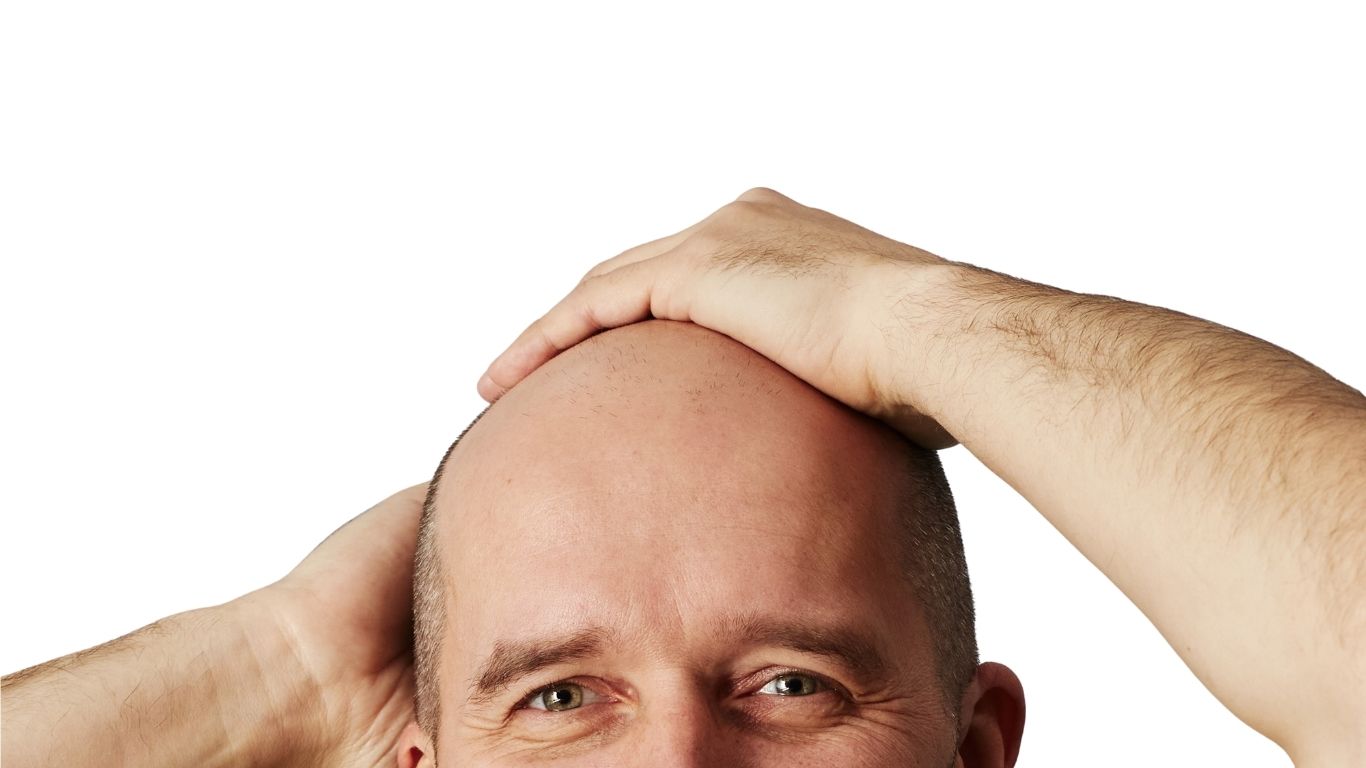Are you bald or do you regularly shave your head? Then you might recognize this: small red bumps, itching, pimples, or even painful spots on your scalp—often around the edges or at the back of your neck. This is not just irritation; you may be dealing with folliculitis, an inflammation of the hair follicles. Yes, even on a bald scalp you can experience this.
In this blog, we’ll explain:
-
Why bald men are prone to inflamed hair follicles
-
How to recognize and treat folliculitis
-
What you should and shouldn’t do
-
How to prevent it from coming back
What is folliculitis?
Folliculitis is an inflammation of the hair follicles—and even if you’re bald, your scalp still contains follicles. Even if no visible hair grows, the follicles are still present in your skin.
These hair follicles can get inflamed from friction, shaving, sweat, or bacteria, causing:
-
Redness
-
Itching or burning sensations
-
Pimples or bumps
-
Painful or sensitive spots
-
Sometimes crusts or scarring
It often occurs in men who shave their heads closely or frequently wear hats, helmets, or headphones.
Why especially in bald men?
A bald scalp is often more sensitive to external influences such as sun, shaving, friction, sweat, dirt, or soap residue. Because there’s no hair as a protective layer, the skin reacts more easily with irritation.
Common causes for bald men include:
-
Shaving with a dull blade or dry skin
-
Ingrown hairs after shaving or trimming
-
Sweat buildup under hats or helmets
-
Bacteria or fungi due to insufficient cleansing
-
Heavy creams or sunscreens clogging pores
Symptoms of folliculitis on a bald scalp
Do you notice any of these symptoms?
-
Redness, especially around the edges (neck, temples, behind ears)
-
Small pimples or bumps
-
Irritated skin with a burning feeling
-
Painful or sensitive spots when touched
-
Crusts, wounds, or rough patches
-
Sometimes bald shiny patches with scarring
If so, you likely have folliculitis—which needs targeted care.
How to treat inflamed hair follicles on a bald scalp
1. Cleanse your scalp daily
-
Use a special shampoo developed for your Bald Head, gently cleansing your scalp such as Bald& Headwash
- Choose fragrance-free and alcohol-free products
- Avoid too strong exfoliants
3. Shave carefully—or take a break
Shaving an inflamed scalp worsens symptoms. Tips:
-
Use a clean, sharp blade
-
Shave wet, never dry
-
Shave with the direction of hair growth
-
Rinse your head with cold water after shaving and/ or use a after-headshave product developed for your bald head such as Bald& After-Sun & Shave as well as Bald& Headwash
-
Consider not shaving until your scalp calms down
4. Use light skincare, avoid heavy creams
A bald scalp needs care—but heavy or oily creams can clog pores. Prefer:
-
A light gel with panthenol or aloe vera such as Bald& Day Cream
-
Sunscreen for the face (light formula, SPF 30+)
-
Avoid: petroleum jelly, coconut oil, or heavy sunscreens
5. Pay attention to hats, helmets, and pillowcases
-
Wash headwear regularly at 40–60°C
-
Change pillowcases every 2–3 days
-
Avoid synthetic fabrics that don’t breathe
-
Wear a sweatband or helmet liner during sports or work
When to see a doctor?
See your doctor if:
-
Symptoms last longer than 2 weeks
-
You have pus or crusts that don’t go away
-
You have recurring inflammation frequently
-
The skin is painful, tight, or hair loss occurs in affected spots
A doctor may prescribe antibiotics, antibacterial lotion, or antifungal medication. In rare cases, further testing may be necessary (such as with chronic folliculitis or scarring).
7 tips to prevent folliculitis on your bald head
-
Cleanse your scalp daily, even without hair
-
Shave wet, carefully, with sharp tools
-
Avoid oily or fragranced products
-
Leave inflamed areas alone—don’t rub or scratch
-
Wear clean hats or helmets and give your scalp breaks
-
Apply light SPF daily—even in winter
-
Don’t share towels or razors
Final words
A bald scalp looks sharp and confident—but deserves good care. Inflamed hair follicles happen even without visible hair and can be painful and unsightly. Fortunately, most cases respond well to proper cleansing, hygiene, and attention.
If you have regular problems, take them seriously. Your scalp is your calling card—even without hair.

0 comments